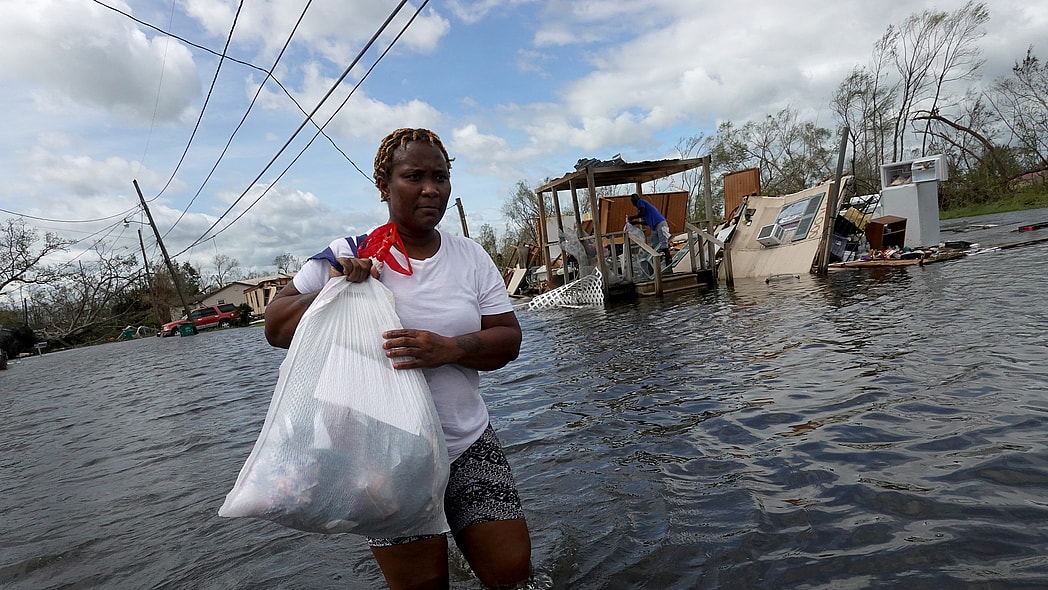Nearly half a million people in Louisiana remain without power. The estimated wait time until power will return — 20 days to a month. On the east coast, those who reside in Pennsylvania, New Jersey and New York were also adversely affected as water swarmed into basement apartments and overwhelmed subways.
Who has paid the biggest price for these grievances? Black and brown people. Vulnerable populations. Poor communities.
Even the Environmental Protection Agency has agreed, “Racial minorities in the United States will bear a disproportionate burden of the negative health and environmental impacts from a warming planet.” A warming planet that creates more earthquakes, storm systems and flash floods like Hurricane Ida. This warming planet has created conditions optimal for what we call environmental racism.
Oftentimes coastal communities are the most affected, and when infrastructure like the levees and sea walls are considered, one must look to the storied history of how natural disasters have historically affected vulnerable populations in this country. Both Hurricane Ida and Hurricane Katrina disproportionally affected predominantly Black areas in the state of Louisiana.

This time, the levees held — due to the $14.5 billion investment and 1,836 lives sacrificed by the city during Katrina. Yet Ida still wrecked havoc on both lives and property, and communities of color were still on the frontlines. But why? In places like South Florida, it is often the rich who can afford high rises on the ocean or beachfront mansions. The stark difference is these groups can afford to flee in times of emergency.
Meanwhile indigent populations that are located beyond the wealthy beachfronts are disproportionately vulnerable to these catastrophes. It begs the question of who is most vulnerable to flooding and how do local, state and federal elected officials do their part to ensure flood management is equitable across all populations?
The mental health struggles that accompany living in these cities are also heart wrenching. Many Katrina survivors recounted their traumatic experiences, fearing for the worst as they braced themselves for Ida. The similarities were glaring. Only this time, they had the added stress of previous financial strain, due to the COVID-19 pandemic.
With joblessness rampant, cities with a high rate of impoverished citizens, like New Orleans, suffered the most. Twenty-six percent of all households in New Orleans and over 33% of Black households there had a net worth of zero. The unemployment rate for Black families was three times the rate for white families and over 31% of these Black households earned below the poverty line. Many of these statistics worsened post Katrina and certainly during the pandemic.

Hurricane Ida cast a magnifying lens over the structural inequalities that New Orleans and cities like it have continued to face. And yet, New Orleans seemed to not have learned her lesson. One thing is certain though; Black people have continually expressed their dissatisfaction with having to be “resilient,” when their communities are decimated again and again.
So what is the solution? The attention and intention should be to allow displaced and affected residents to recover, rebuild and return. But where to? FEMA (Federal Emergency Management Agency) reported, “In the US, the average area of the 100-year floodplain will increase by 45% by 2100, while the annual damages from flooding are predicted to increase by $750 million.”
These statistics illustrate that the number of people and property exposed to flooding will increase but what is perhaps most alarming is the demographic of people this will disproportionately affect. In fact, property giant Red Fin noted that “formerly redlined areas experience 25% more flood risk than non-redlined areas.”

During Katrina, most of the relief policies supported homeowners — even though half of the city is made up of renters. President Joe Biden’s administration has tried to combat this by allocating 40% of funding specifically to disadvantaged communities through FEMA’s Flood Mitigation Assistance Program.
Fortunately, in the recent historic bipartisan infrastructure bill, over $4 billion in funding was allocated toward FEMA. But still, many remain vulnerable and unprotected, such as the Isle de Jean Charles indigenous community, whose Biloxi-Chitimacha-Choctaw tribe was left behind when they were excluded from the levees protected zone.
America cannot continue to express its surprise every time a natural disaster devastates poor Black and brown areas. While America may not have created the hurricane itself, it has certainly created the figurative storm of housing inequity, health disparities and environmental racism that continue to torpedo through Black and brown communities alike — leaving death and destruction in her wake.
Have you subscribed to theGrio’s new podcast “Dear Culture”? Download our newest episodes now!
TheGrio is now on Apple TV, Amazon Fire, and Roku. Download theGrio today!


